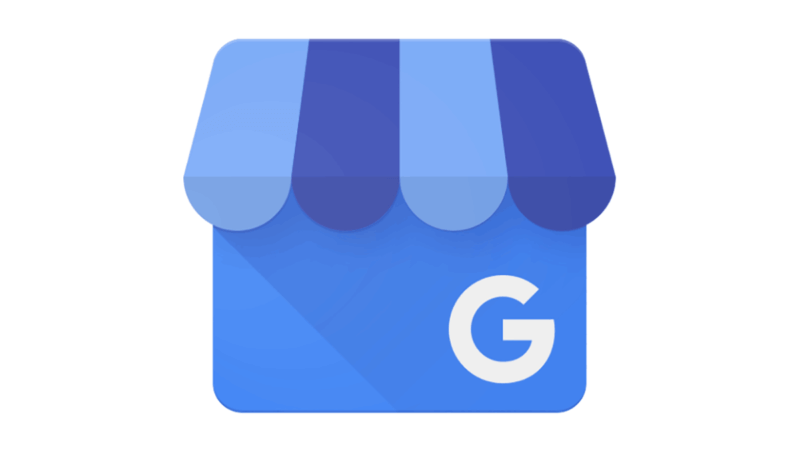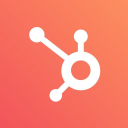We Created A Data-Focused Agency & Grew It To $40K/Month
Hello! Who are you and what business did you start?
Hi, I’m Katie and I’m the CEO of Trust Insights. I co-founded this company in 2017 with my business partner Christopher S. Penn. Trust Insights is a consultancy that focuses on digital marketing, data analysis, and change management. We started the company as a reaction to what we were seeing in the marketing industry. There are a lot of marketers, and other professionals, that state they are “data-driven” but don’t make decisions with data. This is where we come in.

A big issue I saw with the consulting industry as a whole was a lack of transparency. Everyone is so tight-lipped about how things are done, with this fear that we’re going to steal each other’s secrets. I wanted to change that, change that culture and change that for our clients. We use a lot of Artificial Intelligence and Machine Learning to do our analysis and there are very few resources that help non-technical people understand what’s going on and how the technology works. I wanted to change that conversation. I am not a data scientist like my co-founder, so I saw an opportunity to be a voice for those that are intimidated by advanced technology. I spend a lot of my time teaching and educating people not only on what we do but how we do it and how they could do it themselves.
What's your backstory and how did you come up with the idea?
I started my career in clinical research and eventually moved into product development/management and eventually marketing technology. What I found is that there is a common thread in each profession. Change management. People don’t handle change well, especially when there is a lack of communication, process, and outcomes. Everyone has the same agenda, “what does this mean for me?” This was the problem I wanted to solve. I wanted to marry data analysis with change management. I wanted to help people understand how to use the data to their advantage for themselves and their company.
In the company I focus a lot on the “So What?” - meaning, any consultancy can give you a set of recommendations, so what? What is the action? What does someone need to do? How does this impact the team, and the customers? This was an “aha” moment for me when thinking through how we would be different. I decided that every deliverable, every conversation, and every agenda would have a “so what?”. We’ve even called our weekly livestream “So What” because we wanted to make sure the audience knew what they would be getting from each and every episode.
Take us through the process of designing your services.
In the early days, we were really just trying to figure out how to help people solve their problems. It’s challenging when you don’t have a physical product to articulate what it is that you do and what people can buy from you. We ended up saying “yes” to doing a lot of things that wouldn’t make the final cut of our products.
We don’t have traditional product that you can buy off the shelf, but we do have set services and reports that you can purchase. I wanted to create an easy experience for potential clients, to be able to easily see the solutions to their problems and let us know they wanted us to help. To get started, we poured through feedback from previous client and customers of past jobs. We wanted to see if there was a common thread with the pain points. What we found was that everyone, from every level, was struggling to understand their data. What data they were collecting, what data they should be collecting, and what to do with it once it was collected. We decided this would be the foundation for our services, helping people make sense of their data.

We’ve refined our services since we launched, learning what works as we go. When we first started, we doubled down on communicating the use of artificial intelligence and machine learning. What we’ve learned over the past few years is that how we get results isn’t as important to a client as the fact that we can get results. We’ve backed off of the overly technical language in favor of more practical and tactical language. This is reflected in our more recent case studies.
At the end of the day, we help people find answers using their data. This can look a lot of different ways. Think about it like sorting your laundry, where laundry is an analogy for your data. We all have a pile of clothes that needs attention. Maybe you just want someone to wash them and put them away. We can do that. Maybe you want someone to help you while you decide what to keep and what to donte. We can do that. Maybe you want someone to teach you how to organize your wardrobe and make outfits. We can do that.
Describe the process of launching the business and getting your first clients.
When we launched the business we had a list of people who had previously said, “if you ever go out on your own, let me know and I’ll hire you.” We had a very basic logo and a lot of free or low-cost software to work with. We tried to start with just the essential things; a simple website, a simple CRM, and a way to get emails out to subscribers. One of the mistakes we wanted to avoid was trying to do too much at once.
This was our original name and logo:

I never loved it but it was good enough to launch a company with. We were eventually able to rebrand and hire a proper designer. We dropped the “brain+” and overhauled our look to be cleaner. Here we are today:

We had initially tried to secure funding but were turned down each time because of how we had structured the company. I was to be the CEO, the person in charge. But yet, I’m a woman and this is a technology company. So, that must mean that I don’t know how to run the company. We started to second guess what we were doing but quickly realized that this was exactly why we wanted to start our own company. I was told “no” and “you can’t” at every turn of my career. But yet, I knew I could. Instead of waiting for someone else to believe in me, I decided to believe in myself. I know, it’s cheesy. But it was the mindset I needed to adopt in order to keep moving forward. We started with $0 and didn’t take a paycheck for almost a year. But I believed in me, in us. So we took the leap.
Even now, almost five years later it can be a struggle. Because we are a small agency we wear a lot of hats. I’m often left off meetings and events that I’m helping coordinate because the assumption is that I’m an assistant - instead of recognizing that no job or task is too small for anyone to do and things need to get done. That might be one of the biggest lessons I’ve learned - launching your own business is far from glamorous. Eventually you can scale and hire help but in the beginning you have to be willing to do it all.
All of that being said, we launched the business using just our personal networks. My co-founder had been writing his own newsletter for a few years so that was our first stop. We let that subscriber list know that we were launching a new company and that they could be the first to sign up for the communications and services. We also took to our social networks and then people we had connections with. We were able to sign a handful of smaller clients before we officially launched. These were the folks that said, “if you ever do your own thing, let me know” - so we capitolized on that. We let them know we were doing our own thing and did they still want to work with us? That gave us the confidence boost we needed to keep moving. We were clearly onto something.
We took the leap and poured ourselves into the business. You know that saying, “the cobblers kids have no shoes?” That was us for the first couple of years. No steady paychecks, no marketing, no real time to do anything for ourselves except find new clients and keep them happy. Now that we’re more established (but still small) we’re better about defining our roles internally. I have much more time to focus on the growth of the business.
Since launch, what has worked to attract and retain customers?
We have found that retaining customers stems a lot from the relationships we’re able to build with them. Because we’re in the business of solving problems, part of our time is spent doing the work and most of the time is spent listening. This is where Chris (my co-founder) can really divide and conquer. As a data scientist, he works on systems and analysis. As the customer relationship manager, I can have honest conversations with my clients and really get to the root of what’s going on. What they think they need from us may not actually be what will solve their problems. I’ve always been a big fan of being (respectfully) direct with people. I won’t use jargon or sugar coat what needs to be said. If something isn’t working, I will find a way to tell the client. Doing this has led to a lot of long-term client relationships.
Another successful tactic has been our Free Slack Community, Analytics for Marketers. We created this community as a safe space for marketers to ask any and all questions about data, marketing, AI, and anything in between. We’ve grown to more than 2500+ members with regular, daily engagement. We have found that it’s a great way to demonstrate our expertise by answering questions and pointing members to quality resources. We don’t need to do a hard sell. Members tend to reach out and make referrals on our behalf. You can join here.

Lastly, we stay connected to our prospects and customer through our weekly email, INBOX INSIGHTS. It offers technical and non-technical perspectives on common issues that all marketers are facing. Again, it’s not a hard sell but an opportunity to demonstrate our expertise and capabilities. We are currently at over 20,000+ subscribers. You can subscribe here.

How are you doing today and what does the future look like?
Today, despite the pandemic and budgets being cut that could impact our client roster, we’re thriving. We’ve managed to pivot our services and our messaging to help. What I realized in the past couple of years is that a lot of teams were going back to basics. This means, that they wanted to cut costs and re-prioritize how they were approaching tactics in their business. We saw this happening with a lot of our clients and recast our services to assist. We can set up your infrastructure, and your tech stack, so that you can effectively measure your efforts. This is something that people always need.
We’re always experimenting with our marketing, trying new things, and testing. We’ve seen a nice uptick in site traffic and email subscribers. We’ve been testing out different social media platforms, such as TikTok, which is tough for a marketing agency. We’re trying to see if we have the chops to create different types of content (video, audio, text) and where they are most impactful.
What has really worked is creating our own community, Analytics for Marketers. We host it on the Slack platform and it’s free to join. We’ve found this to be the best place for testing new ideas, keeping our collective fingers on the pulse of pain points, and attracting a different audience.
Set boundaries early and often. It will save you a lot of headache in the long run.
Through starting the business, have you learned anything particularly helpful or advantageous?
In order to make it seem like we were everywhere, we employed the transmedia framework. We would record video, use the audio as a podcast, the transcript as a blog, the video file on streaming platforms, and snippets on social media. We would record once and repurpose the content in multiple ways. That was a huge cost and resource savings. We still use that tactic for our marketing now.
When we started, I started looking for strategic partners. We couldn’t be everything to everyone so I felt like we could build the business faster by finding partners with complementary services. This would allow for twice the sales power and larger contracts. We’d also be able to share the workload a little easier. It’s saved us from having to bring on and let go of contractors/employees as our workload ebbs and flows. Instead, we’ve set up referral agreements and profit sharing with our partners. It’s been much better for us.
To keep ourselves organized, I developed the 5P framework for Change Management. We use this for each and every project that we conduct. I have found that consistency and predictability are the keys to our success in the long run. The 5Ps are Purpose, People, Process, Platform, and Performance. Using this framework forces us to really think through the project, and what we want to achieve, and set realistic expectations. We have to be able to answer each “P” before kicking anything off, both internally and externally. It’s a framework that I encourage all of my clients to use for themselves as well. You can read more about it here.
What platform/tools do you use for your business?
We try to keep it fairly simple so that our business is not too complicated to maintain.
We use WordPress for our website, Hubspot as our CRM, Mautic for marketing automation, and Slack for our community.
Advice for other entrepreneurs who want to get started or are just starting out?
One of the things I learned really quickly is that you cannot be everything to everyone. You will get requests that are outside of your expertise but because you’re just starting out you’ll feel inclined to say “yes” and figure it out later. This will cost you precious time and mental energy that you should be spending on building the business you want to run. Saying “no” is hard but you have to do it. Set boundaries early and often. It will save you a lot of headaches in the long run.
The other thing that has been really helpful is to surround yourself with a community. This can be on social media or in real life. You don’t need to know each and every person but finding like-minded people that experience a similar journey is empowering and supportive.
Are you looking to hire for certain positions right now?
We are not currently hiring. We want to try and stay as lean and agile for as long as possible. We’re getting to a point where we’ll need some extra hands. When that time comes we’ll be looking for an account manager and a data analyst.
Where can we go to learn more?
If you have any questions or comments, drop a comment below!

Download the report and join our email newsletter packed with business ideas and money-making opportunities, backed by real-life case studies.

Download the report and join our email newsletter packed with business ideas and money-making opportunities, backed by real-life case studies.

Download the report and join our email newsletter packed with business ideas and money-making opportunities, backed by real-life case studies.

Download the report and join our email newsletter packed with business ideas and money-making opportunities, backed by real-life case studies.

Download the report and join our email newsletter packed with business ideas and money-making opportunities, backed by real-life case studies.

Download the report and join our email newsletter packed with business ideas and money-making opportunities, backed by real-life case studies.

Download the report and join our email newsletter packed with business ideas and money-making opportunities, backed by real-life case studies.

Download the report and join our email newsletter packed with business ideas and money-making opportunities, backed by real-life case studies.


























